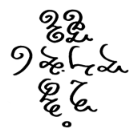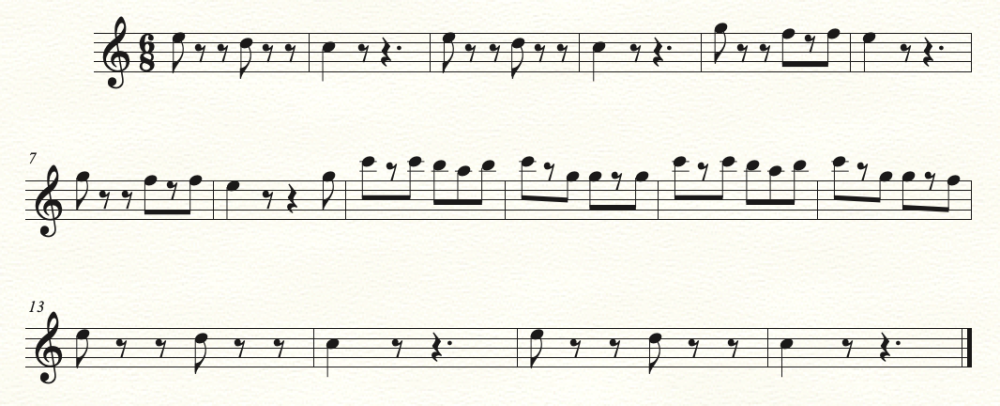Leaderboard
Popular Content
Showing content with the highest reputation on 10/05/2025 in all areas
-
Hi long time for no posting! I decided to post an old work of mine.This Nocturne in C-sharp minor is a juvenile work of me as a 16 year old. I didn't think much at the time of composing, but I did write in the style of Chopin Nocturne then. And then a sudden thought caused me to have a 1st try in fugue in 2:35! I revised the work recently to improve on some voice leadings and transitions except passages after the fugato, but retained as much the original intention as I can as a 16 year old then. The work, even though as immature as it is, does reflect some of my feelings then. Here is the Youtube video and the score of the piece: (Final Draft) Nocturne in C sharp minor.pdf This work can be regarded as in a rondo structure: 0:00 1st part(A), typical Chopin Nocturne texture. Don't know why I modulated the music to F major but the music did so himself... 0:58 2nd part(B) Main melody in F major, but with a new b motive in b.31-32 1:35 3rd part (A') The main melody in the original key can't wait to enter... Gets more agitated and cools down. 2:35 4th part (B'). A fugato using motive b as subject and main melody as episode, modulates once more to F major 3:57 Last part and coda (A''): The A section returns with some registeral change, then gets more agitated. 4:29 is the climax of the piece which is my favourite too, I like the agitation in it. 4:47 starts the coda and finally the mood cools down and ends in tonic major. I played the recording myself. I do make one major slip in 3:22 but the recording is otherwise good enough for me. Feel free to leave comment below! Henry4 points
-
Awesome Henry! I bet 16 year old Henry couldn't play like this recording 😄 Well done, it's good to hear music from you again!2 points
-
Wow! The piece unfolds and reaches climax quite effectively. I can totally see how the music itself demanded a modulation to F major there lol—and it works great! The fugato section was a nice touch with theme A as the episode and theme B as the subject. I like how the climactic section cools down with plagal harmonies iv—I, gives a bittersweet aftertaste to all the previous agitation. That’s why the decision to end it on the major version of the tonic was a good choice. Such a competent and fluent work!2 points
-
2 points
-
This is incredible. So inspired and perfect structured. Well done my dear Henry. 👏2 points
-
As the third installment in my enharmonic perpetual canon cycle, this one follows a procedure nearly identical to that of the first one and is quite similar in duration as well. The lyrics (once again, in Latin) sung by the choir translate as follows: "Change is inevitable in all things. Everything flows in the balance of those who are tempestive." As with the previous installment, the coda further drives the meaning to greater clarity and realization. YouTube video link:1 point
-
Ah, I meant the children's song, "Three Blind Mice." Surely you've heard it (attached)? Anyway, it was fun to come back and see what's up. I mean, that's totally fair; the arco would definitely give it a sharper bite. And nah, wouldn't be too quick; they player would keep the hand in the bow position while plucking it (though they may complain about it). Obviously, up to you. I realize I may have come across as too negative with all the criticism—I think this piece is super cool and I'd love to hear the version with the expanded middle section if you ever get to it.1 point
-
Thanks! It's been a hot minute since you've been here! Glad to see you reviewing again! As mentioned in the description - the piece is inspired by the show "Wednesday" as in Wednesday Addams from the Addams Family. I haven't seen Three Blind Mice either. Ah, yes. I haven't thought about how the roll suddenly includes more notes and in that regard, contradicts the decrescendo. Perhaps in a performance the number of notes in the stop could be reduced, maybe all the way down to only two notes as you suggested. I kind of like them arco. Besides, wouldn't it be too much switching between arco and pizzicato too quickly? Perhaps you're right there. I had planned for the middle contrasting section to be longer giving the key change more utility/necessity. Your nit-picks are also duly noted. Thanks again for your detailed review!1 point
-
Cool stuff. I'm gonna guess you were quoting Three Blind Mice; I haven't seen the show. If not—well, you might have reinvented the wheel. A couple things: 1. I'm not sure how I like the quiet rolls at the ends of phrases. I know they're possible, but they're gonna be a little awkward and take time, delaying the nice quiet resolution. If I were to suggest a change, I'd maybe consider doing a two note thing (like a grace note + final note kinda thing), with some rolled figure in the keyboard to supplement the effect. 2. I'm guessing you want your many grace notes to connect to the triplet figure that come after them? I'd suggest being really explicit about that if so; string players are literal (e.g., don't bother giving string players phrasing slurs). 3. mm. 23–24 and 72–73: My brain kind of wants to hear some of these plucked for some timbral variety, especially since the keyboard takes over there. Something like the first note is arco, the others are plucked, until the anacrusis to the next bar. 4. I don't think your slow section needs a key signature change, personally, especially because I don't hear your key centers as the implied I–bVI–IV of A-flat major. Think of it like musical theater: you change keys so goddamn much that sometimes it ain't worth it. (Also F-flat major is kinda obnoxious to read). Nitpicks: a. Could use some more courtesy accidentals, when used in succession. For instance, throw a courtesy in m. 41 just for funsies. b. D/C double stop is kinda annoying, and very sad that it moves to Eb/A, which can't use the open A. I see the voice leading, it could maybe be a little more practical, though. c. Make sure dynamics are on the notes played. I think we really only put dynamics if it's "n" at the end of the note's duration. Maybe it's for the playback. d. Last measure: take out the rests in the right hand, since it's written like the right hand is doing a register transfer to a lower octave. Really fun stuff. Congrats.1 point
-
For your interested ..... improved harmony, better support for the singers, removed parallel motion, some tweaks in the piano score. Here's the finished version .... Sing It Loud 9-25-25.mp31 point
-
1 point
-
Oh my, that's definitely it. 😮 Wrote this melody for the French horn to play as a prelude-esque intro. I tried to give nods to the main melody,but I also don't want to make it too redundant. Any feedback there? I struggle a bit with melody writing, especially when I've already written some material that I just love lol.1 point
-
I'll quote for you another passage from Chapter 32 of Gabor Mate's "In the Realm of Hungry Ghosts" - a book about addictions. The author talks about his addiction to buying CDs of orchestral and classical music:1 point
-
Hi to all. Just wanted to post an orchestration I've attempted of Purcell's "Funeral Sentences". Correct me if I'm wrong, but I think this was originally written for SATB choir, with timpani and a quartet of trumpets. Here I've arranged the piece for full symphony orchestra. Not sure if it's been orchestrated like this before, but haven't heard any other versions in this instrumentation. I used an old midi file as the basis for my score: so some of the trills and drum rolls look a bit strange. Think they sound more realistic like this though: so it may not be such a bad thing. Haven't bothered with slurs, as the score is designed for midi rendition only. (Also have noticed I need to correct my spelling of D major chords.) Hope you enjoy!1 point







.thumb.png.8b5b433a341551e913a34392660bc95b.png)

